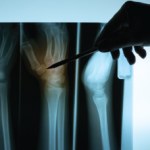(Reuters Health)—Older women with osteoporosis who consistently take a bisphosphonate may have a lower risk of fractures and lower total health costs than their counterparts who stop taking these drugs, a U.S. study suggests.
Researchers examined data on 294,369 women who were at least 66 years old, insured by Medicare and prescribed osteoporosis medicines for the first time at some point between 2009 and 2011.
Overall, roughly one third of these women consistently took their medications for at least a year with no gaps of two months or longer. The remaining two-thirds were considered “non-persistent” users because they had even longer lapses in medication use.
Among women who consistently took their drugs, annual fracture rates dropped from 16.2 fractures for every 100 patients in the six months before starting medication to 4.1 fractures for every 100 patients in the first 18 months of using osteoporosis drugs.
Women who were non-persistent users, however, had higher annual fracture rates: 19 fractures for every 100 patients in the six months before starting medication, and 7.3 fractures for every 100 patients over the first 18 months after drugs were prescribed.
“Osteoporosis medications can increase bone formation or decrease bone break down, resulting in increased bone density, therefore, decreased risk of fracture,” says lead study author Jiannong Liu, PhD, of the Hennepin Healthcare Research Institute in Minneapolis.
“When the medication stops, bone density will decrease again,” Dr. Liu says by email.
Widespread use of bisphosphonates in the U.S. coincided with a dramatic decline in fractures from the mid-1990s to the mid-2000s. But use of these medicines has declined in recent years following reports of rare, but serious side effects including unusual fractures of the thighbone, death of bone tissue in the jaw and esophageal cancer.
More than one-third of women prescribed bisphosphonates never fill their first prescription, researchers note in Osteoporosis International, online July 18.1
In the study, about nine in 10 women who didn’t consistently take their medicines stopped refilling their prescriptions.
Total average health costs for patients who didn’t take medicines as prescribed were $19,181 a year, compared with $14,476 for women who consistently took their drugs.
Fracture-related costs were higher without consistent medication use, averaging $641 a year compared with $292 for women who stuck with their medicines.
Without consistent drug use, women also had higher inpatient hospital costs: an average of $6,297 compared with $3,516 for those who did take the medicines.

